Home / All Recipes / Indonesian / Es Cendol
Es Cendol
Learn how to make cendol with my step-by-step guide. Don't forget the pandan infused coconut milk and palm sugar syrup to enjoy your homemade ice cendol.
Es cendol (or ice cendol) is one of the most beloved dessert in Indonesia, it looks like a tinier version of gummy worms, with bright green color, and infused with the fragrance of pandan leaves :) There are three different parts to a delicious es cendol, palm sugar syrup, coconut milk, and the cendol itself. Since pandan leaves are used in the making of all three parts, es cendol is definitely one of the most heavenly pandan desserts ever created. ♥
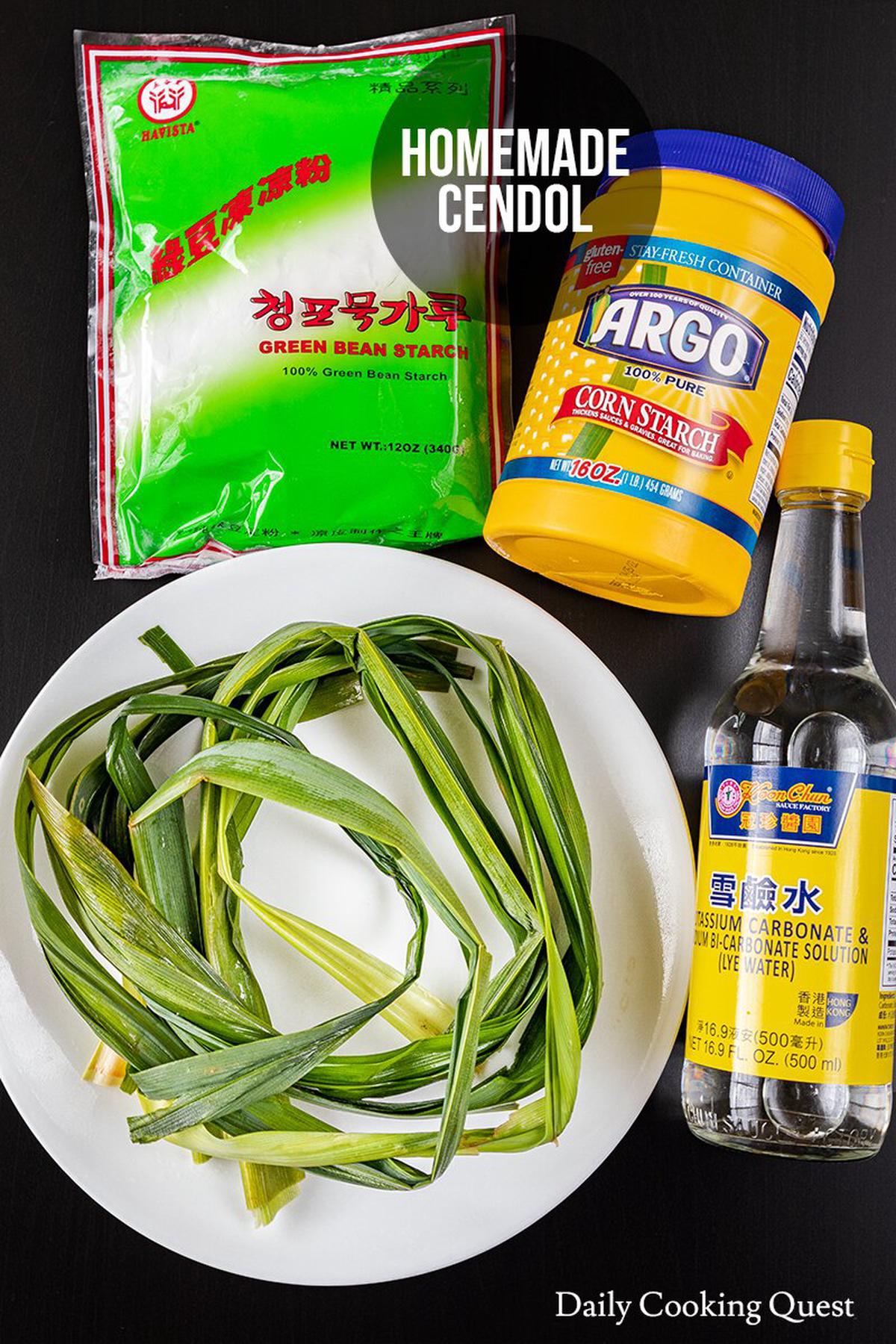
Are cendol and dawet the same thing?
Sometimes you might hear some Indonesians call cendol as dawet, and some call cendol as cendol. Turned out, both are right since there are actually two kinds of super similar looking desserts with super similar taste and almost similar texture. So what’s the difference?
- The main ingredient in cendol is a combination of mung bean starch (known as tepung hun kwe in Indonesia) and cornstarch, typically a 1:1 ratio. Cendol has a much firmer texture with more bite and chewiness to them compared to dawet.
- The main ingredient in dawet is rice flour, with a small amount of tapioca starch. Dawet has a softer texture with less chewiness compared to cendol.
Some of you might have tried very similar-looking dessert from your visit to Indonesia, or maybe Malaysia or Singapore. In most cases, what you tried was more likely cendol (a guaranteed 100% if your visit was to Malaysia/Singapore). Even for Indonesians, what most people get nowadays is cendol, unless the sellers specifically say “es dawet” in their menu.
I will give you two options in my recipe, but I think most people will love cendol more than dawet.
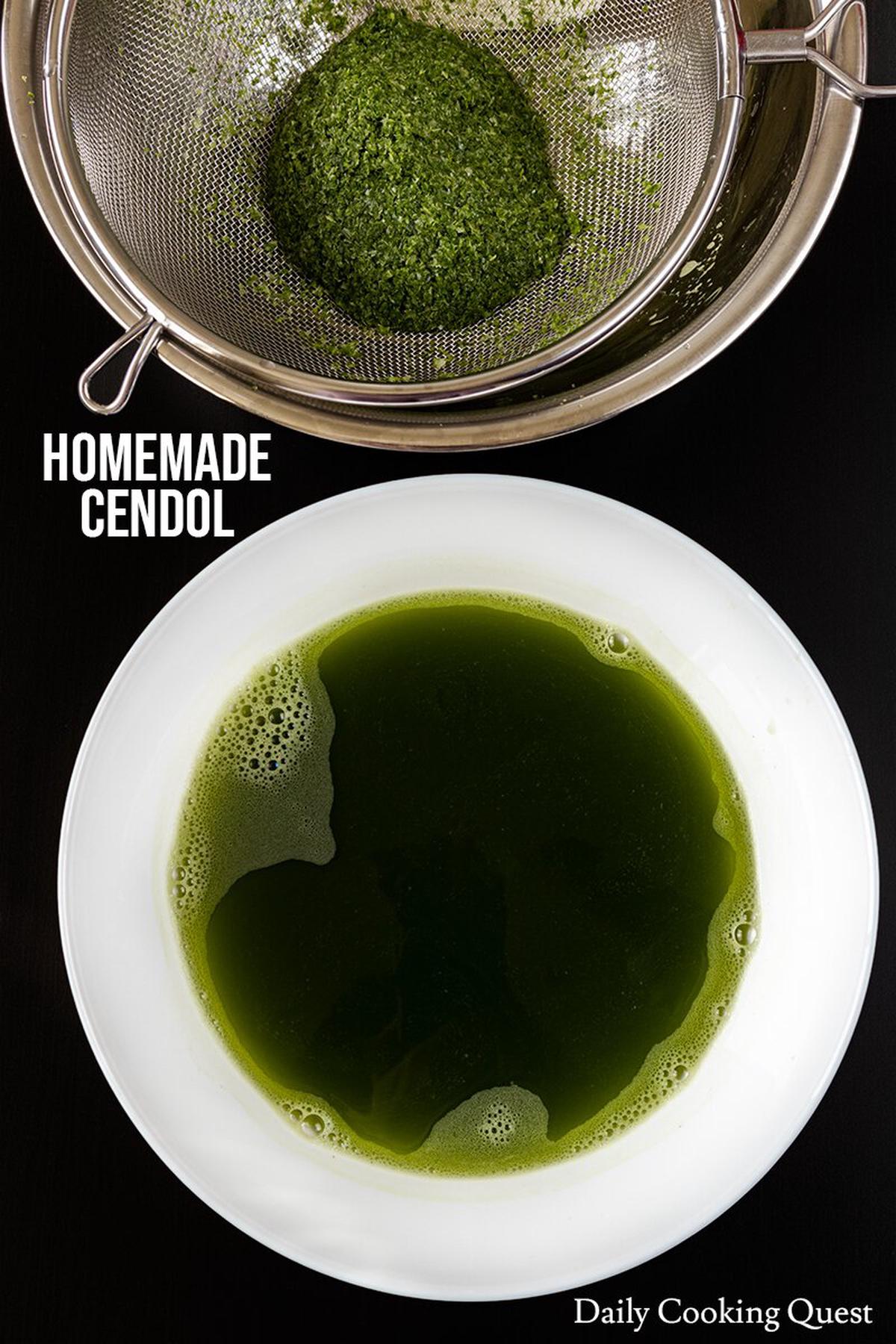
What you need to prepare cendol
If you want to make cendol, you will need:
- fresh/frozen pandan leaves
- mung bean starch (sold as tepung hun kwe in Indonesia)
- cornstarch
- lye water (optional, though I highly recommend it if you can buy it)
If you want to make dawet, you will need:
- fresh/frozen pandan leaves
- rice flour
- tapioca starch
- lye water (optional, though I highly recommend it if you can buy it)
Whether you choose to make cendol or dawet, I highly recommend adding a little amount of lye water (1 teaspoon if you follow my recipe) to the cendol/dawet batter. Lye water adds chewiness and firmer texture to the final product, and the texture will be closer to what you get from cendol/dawet sellers. Also, if you don’t plan to serve the cendol/dawet immediately, the lye water helps retain the bright green color of the pandan in your cendol/dawet.
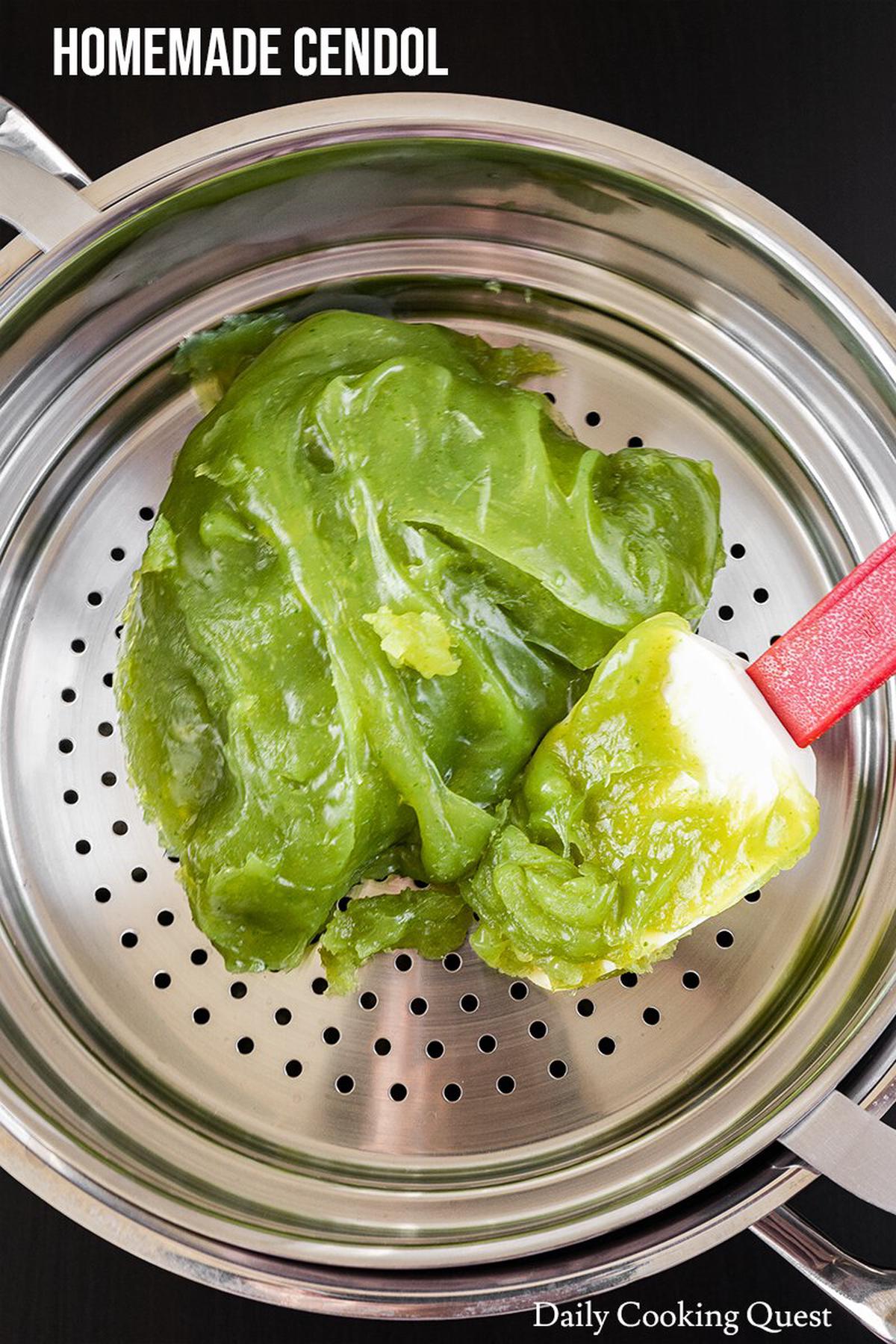
How to prepare pandan extract from fresh/frozen pandan leaves
To get the bright green signature color of cendol/dawet, we rely on pandan leaves. You can use anywhere from 50 gram to 80 gram of pandan leaves for this recipe. Both will be super fragrant, but the 80 gram will give a much darker green color, while the 50 gram will be on the paler side. If you have a lot of supply of pandan leaves, I highly suggest the 80 gram option.
- Wash and drain the pandan leaves.
- Cut it into fine strips with a pair of scissors.
- Place the leaves and 600 ml of water in a blender and puree until very fine. If you have a powerful blender like a Vitamix, this will be a super-fast job. Even with my more modest Ninja, this only takes me about 30 seconds to 1 minute.
- Strain with a fine-mesh strainer to get 600 ml pandan juice/extract.
If you don’t have a fine-mesh strainer, you can place a coffee filter over your regular strainer. That way, you don’t end up with pureed pandan leaves in your cendol/dawet.
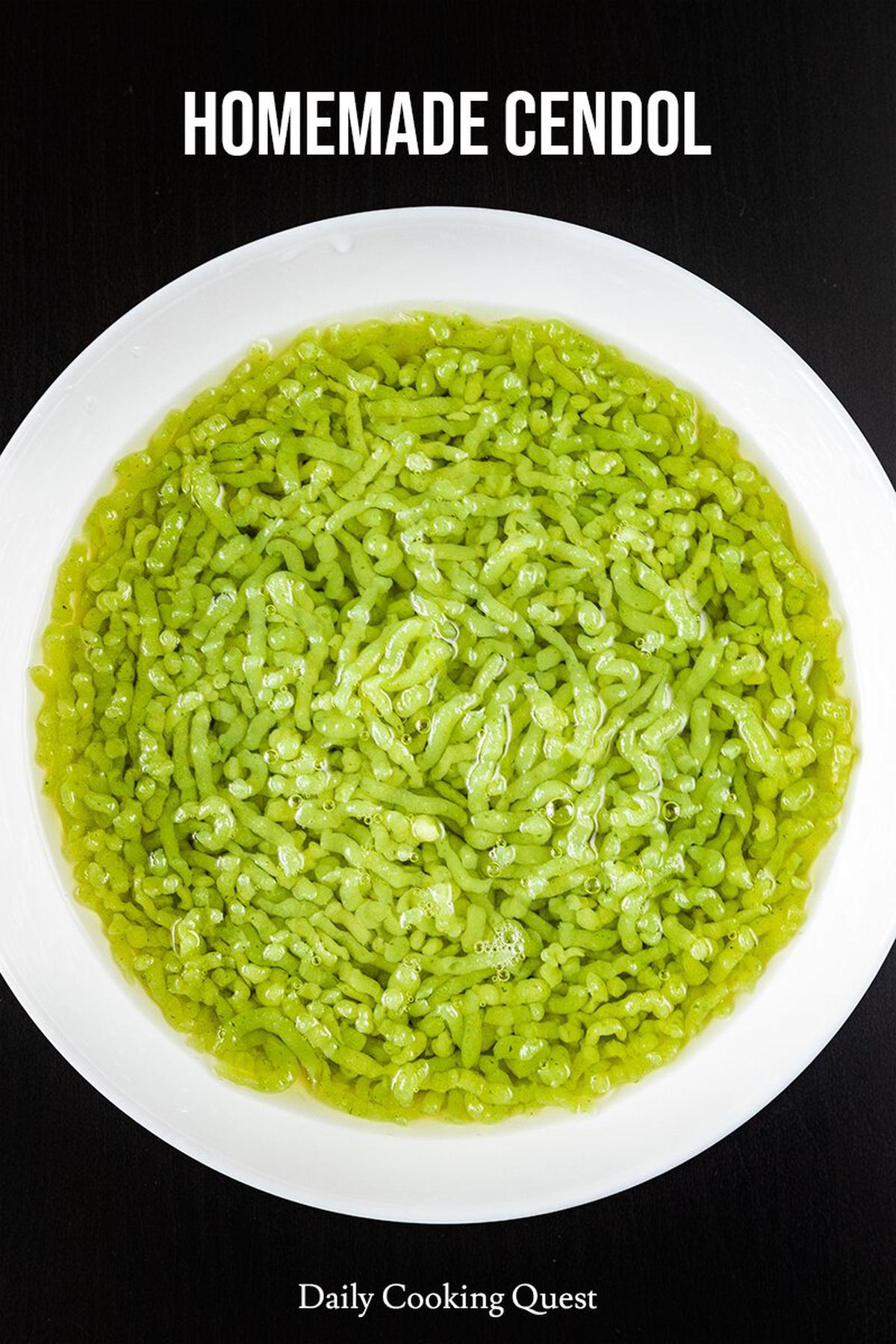
How to cook and shape cendol
Regardless of whether you choose to make cendol or dawet, the cooking and shaping process is the same.
- Stir together pandan juice/extract, flours/starches, and lye water (if using) in a soup pot.
- Turn the heat on to medium, keep on stirring until it turns into a paste.
- Lower the heat to low, stir the paste for another 5 minutes.
When it comes to shaping cendol, you have several options:
- A traditional cendol press: okay, this is more of a tease, since unless you are a cendol seller, or you want to make cendol super regularly, you won’t need this item. If you do want to make cendol regularly, a better alternative is to get a potato ricer and use that in lieu of a cendol press.
- A steamer basket over a soup pot: this is my preferred method. Place about 4 inches of ice-cold drinking water in the pot (It is super important that the water is drinkable! I don’t want you to risk diarrhea or something.) Place a steamer basket over the pot, place the cendol/dawet paste in the steamer pot, then use a spatula to keep on pressing through the holes until all the paste is now floating in the ice-cold water inside the soup pot.
- A big ziplock bag and a soup pot: Transfer the super hot just cooked cendol/dawet paste into a large ziplock bag. Close the bag, and cut one of the corners with a pair of scissors (sort of like a makeshift piping bag). Squeeze the cendol/dawet paste through the ziplock bag hole into a soup pot filled with ice cold water. Obviously, you want to think of a way to protect your hands from the hot paste, so maybe wear a pair of kitchen mittens while doing this.
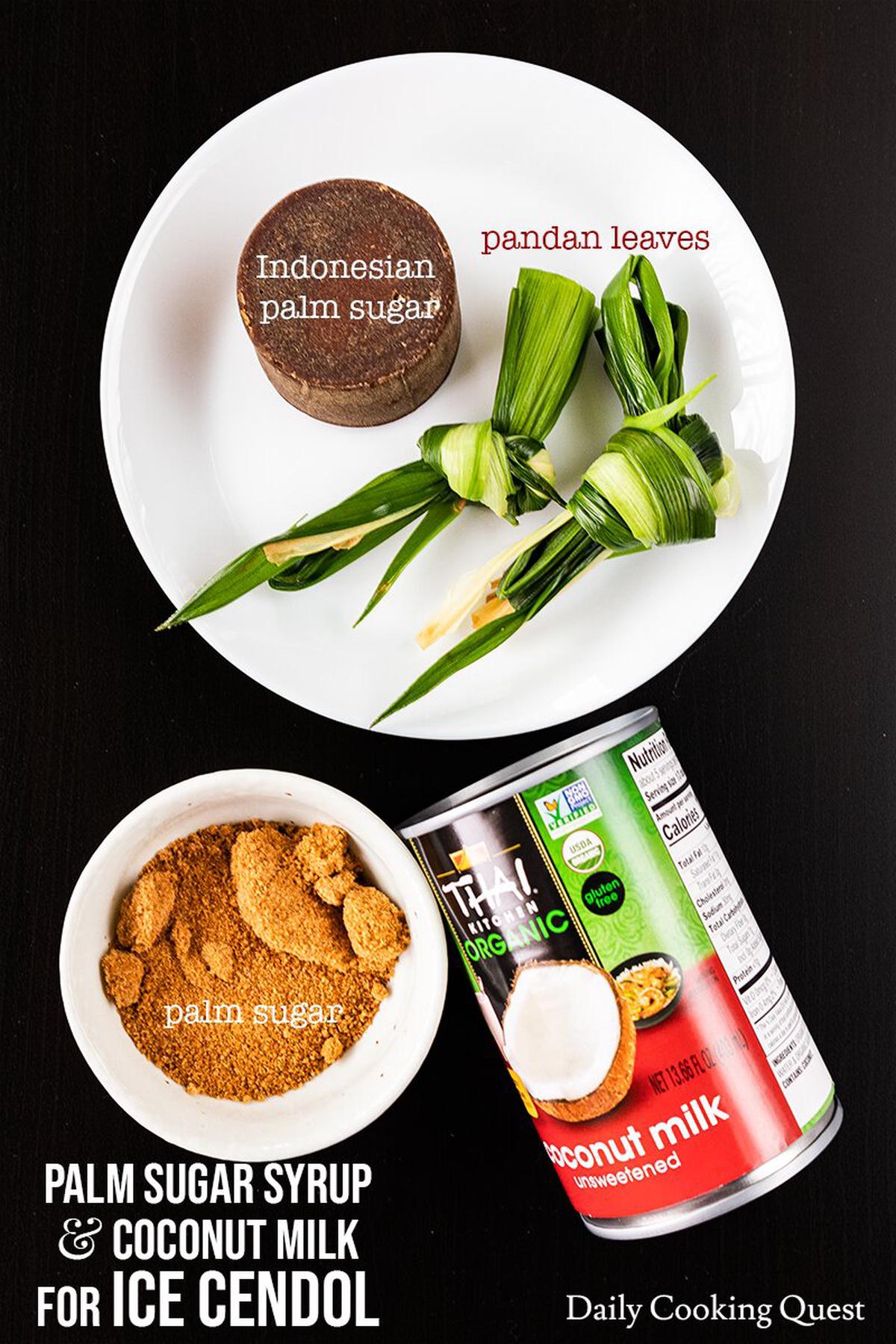
How to enjoy cendol
Cendol/dawet has no taste. Some people add a very minimal amount of sugar and salt to these, but even these will be super bland. The best way to enjoy cendol/dawet is by preparing es cendol/es dawet! You will need:
- some cendol/dawet (obviously)
- some crushed/shaved ice
- some coconut milk, preferably one steeped with the fragrance of pandan
- some palm sugar syrup, also, preferably steeped with some pandan leaves
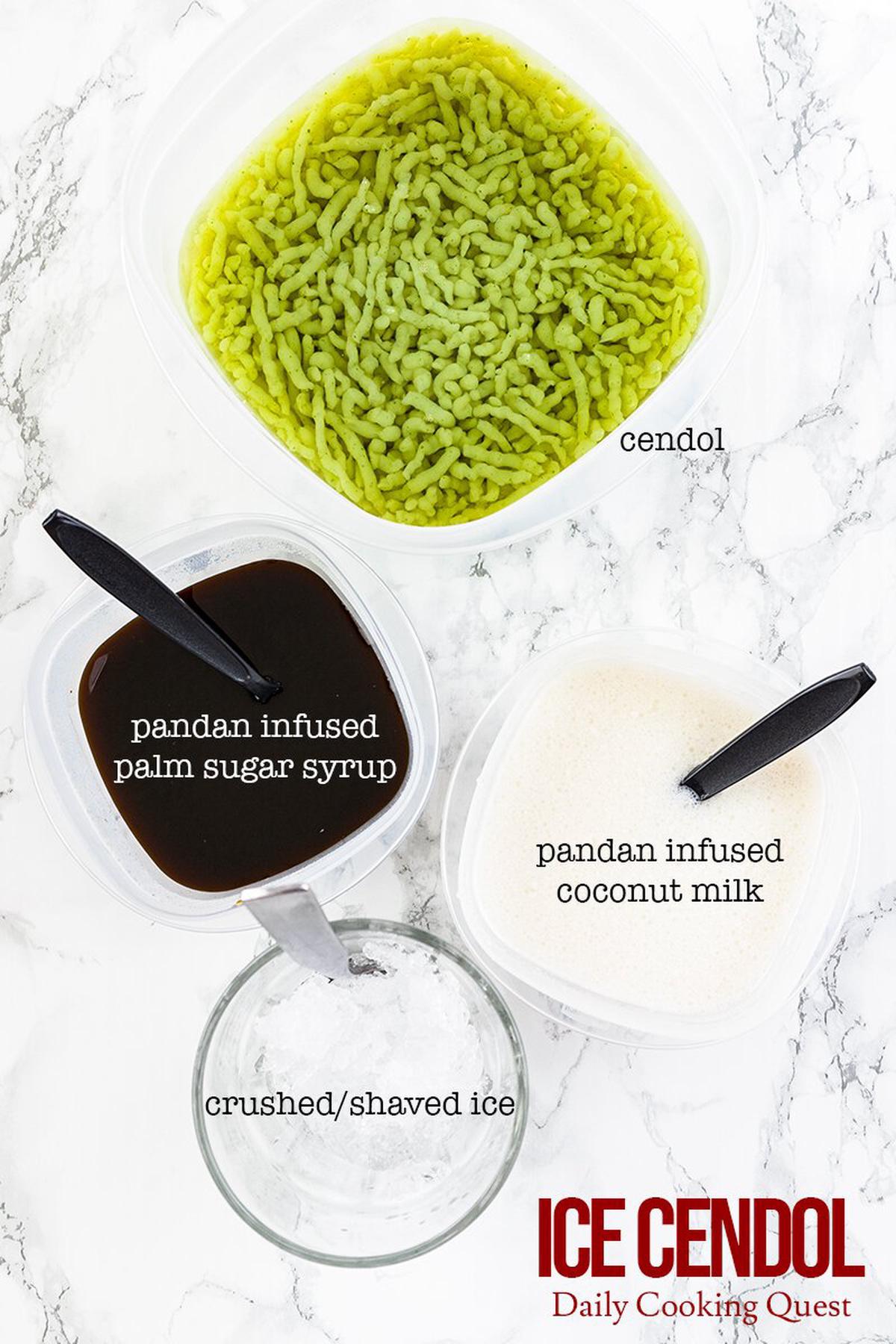
Once you have everything, let’s prepare this super simple version of es cendol by doing the following:
- Fill a drinking glass half-way with crushed/shaved ice.
- Top with cendol to almost fully fill the glass.
- Ladle a generous amount of coconut milk.
- Ladle some palm sugar syrup, usually a lesser amount than the coconut milk, but just add the amount that suits your taste.
- Enjoy with a spoon, just like how you would enjoy a sundae!
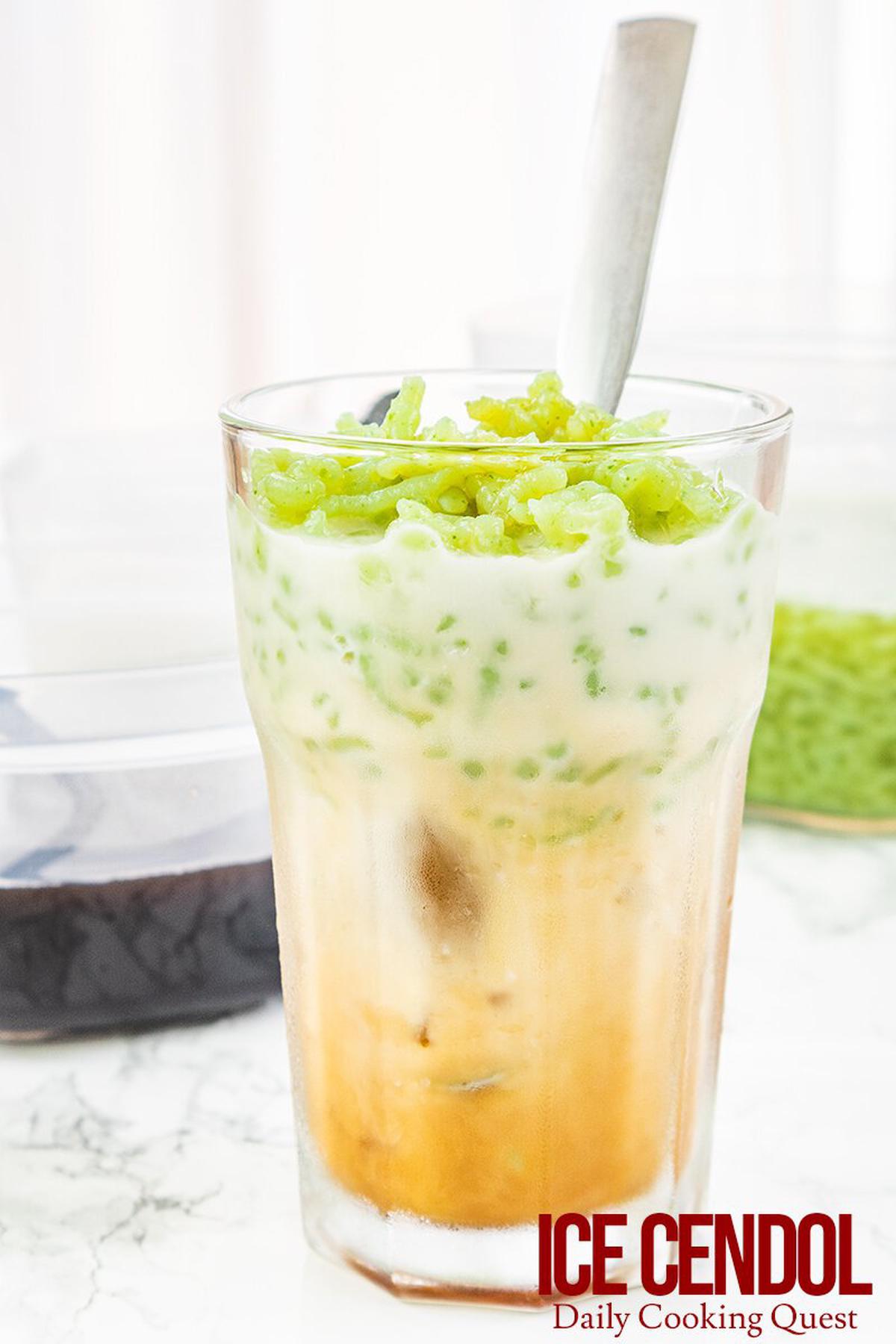
Es Cendol
Ingredients
- Pandan juice/extract
- 50-80 gram fresh/frozen pandan leaves
- 600 ml water
- Cendol
- 50 gram mung bean starch (Indonesian: tepung hun kwe)
- 50 gram cornstarch
- 1 teaspoon lye water (optional, but highly recommended)
- Dawet (if you don't want cendol, but want dawet instead)
- 120 gram rice flour (Indonesian: tepung beras)
- 30 gram tapioca starch (Indonesian: tepung sagu)
- 1 teaspoon lye water (optional, but highly recommended)
- Coconut milk
- 400 ml (1 can) coconut milk (Indonesian: santan)
- 2-3 pandan leaves, knotted
- a pinch of salt
- Palm sugar syrup
- 200 gram palm sugar (Indonesian: gula Jawa) (*)
- 200 ml water
- 2-3 pandan leaves, knotted
- a pinch of salt
- To serve
- crushed/shaved ice
Instructions
- Pandan juice/extract
- Wash and drain pandan leaves, then cut them into tiny strips with a pair of sciccors.
- Place pandan leaves and water in a blender. Puree until the leaves becomes very finely shredded. The time will depend on the motor of your blender. It took about 30 seconds to 1 minute in my Ninja blender.
- Strain over a fine-mesh strainer to get 600 ml pandan juice/extract.
- Cendol (or Dawet)
- Fill a soup pot with ice cold drinking cold water (and optionally, with some ice cubes). Place a steamer basket over the soup pot. Set aside.
- Place pandan juice/extract and all the ingredients for cendol (or dawet if that's what you are making) in a sauce pot and stir until well mixed.
- Turn on the heat to medium, cook and stir at all time until it bubbles vigorously and thickened into a paste (no standing water).
- Lower the heat to low, stir for another 5 minutes to guarantee a thick and stiff paste. You will know it's right because your arm will definitely feel it while stirring.
- Turn off the heat, transfer the paste to the prepared steamer basket.
- Use a spatula to press the paste through the steamer basket holes until all the paste is now floating in the ice cold water inside the soup pot. The cendol/dawet paste should harden immediately and hold its shape. Set aside in the fridge to fully harden the paste, at least 1 hour.
- Coconut milk
- Place all coconut milk ingredients in a sauce pot and cook until the coconut milk starts to boil. Turn off the heat, and immediately remove the pan away from heat source.
- Discard the pandan leaves, and pour into a clean jar/bowl.
- Palm sugar syrup
- Place all palm sugar syrup ingredients in a sauce pot and bring to a boil. Cook until all the sugar has dissolved.
- Turn off heat, discard the pandan leaves, and strain to a clean jar/bowl.
- Assemble ice cendol (or ice dawet)
- In a drinking glass/a bowl, fill half way with crushed/shaved ice, top with cendol/dawet to almost full, ladle some coconut milk and palm sugar syrup. Enjoy with a spoon.
Notes
- (*) Palm sugar syrup is best if you can make it with either Indonesian palm sugar (gula Jawa), or Malaysian/Singaporean palm sugar (gula melaka). If you cannot find any of these, please use granulated coconut palm sugar, and not Thai palm sugar. Thai palm sugar is very pale and the color of your palm sugar syrup will be so different compared to the authentic version.
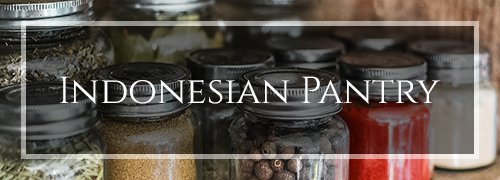
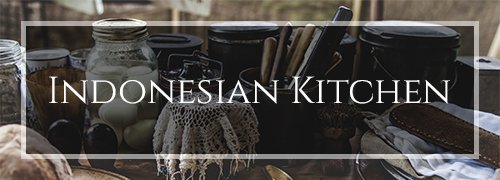

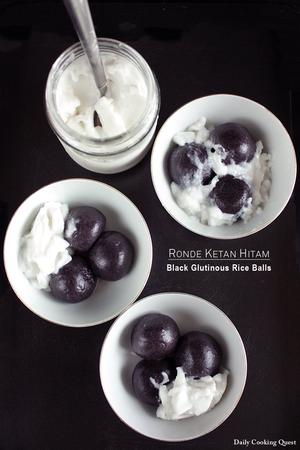
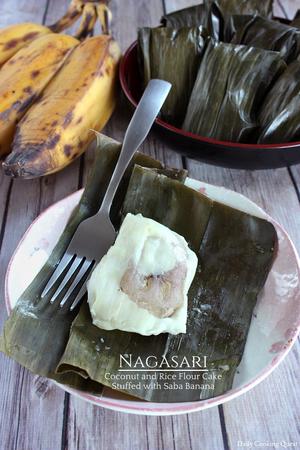

Comments
Hai ci. Ini tekstur cendolnya lembut atau kenyal ya ci?
Cendol lebih kenyal yah, kalo pilih bikin dawet, tentunya akan lebih lembut dan lunak dibanding cendol. Kalo suka yang kenyal-kenyal, saran aku coba membuat yang cendol saja Febryani. :)
This recipe was a bit of a struggle for me, but I'll admit: I've had cendol, maybe 2 or 3 times ever? But it's so special and so distinctively Indonesian, there's no way I could pass up trying to recreate this for myself!
I think this might be where a kitchen scale would help, or even considering that I live at "high altitude" that makes boiling foods a little tricky- I think my batter was a bit too soft? I tried a few different mock presses, and the first one had holes too close together so the cendols all stuck together in a blob D: Then I used a flat cheese grater, and that made it look much more like your photo above.
The thing that was hardest for me was trying to guess if the texture was right. Mine came out really really soft, but it'd been a long time since I had this, I can't recall the proper consistency. I think I needed to let it cook on the stove longer? But then maybe it would be more like play-dough hahahah
I also had to cheat and use pandan extract and some food color (I'm sorry! T__T) but at least I know the pandan taste was really in there, so it tasted like a treat.
The last "struggle" was, though I managed to get some palm sugar, it's from Thailand, and the color is very light yellow. Now, I figure that's a close-enough kind of deal- the taste is good, but the color doesn't look as beautiful 2-tone as the rich brown.
Well, ultimately, it was a passable recreation of a beloved Indonesian drink. I also made a huge mess XD I know one of the es cendols I have had in my life was home-made, so I am determined to get it right!
I'm sorry you had to struggle with this recipe. I'll see if I can revisit and recook this and come up with some tweaks and tips to make it easier. And yes, Thai palm sugar is very pale. It is okay to use Thai palm sugar in savory dishes where the color is not much of an issue, but in dessert, it is not a good substitute. I have found out recently that coconut palm sugar that I can get from Target (brand is Simply Balanced) has a much darker color, closer to, though still not as dark, as those from Indonesia.
This es cendol is such a delicious sounding dessert! It's very unique.
Wow, what a neat concept, I've never made anything like this before, but I may try!
I am so intrigued by this recipe! Looks delicious!
I can't wait to make this for a friend that has special memories when traveling to Indonesia. I'm sure this will be a very special treat for her.
I am sure your friend will be very pleasantly surprised if you make her this treat, Kelly. :)
Gimana caranya untuk bikin gulanya tetap liquid ya? Gulanya belum sempet masuk lemari es, udh keras lagi :). Thank you Mbak sebelumnya.
Hi Deazy, coba setelah sirup gulanya mendidih, turunkan ke api kecil dan pancinya ditutup, terus dimasak terus dengan api kecil selama 10 menit. Setelah itu tunggu sampai sirup benar-benar dingin, baru disimpan di kulkas. Selamat mencoba. :)
This is an amazing recipe - I first had cendol at a small market and loved it and have been trying to recreate it every since. Thanks for the step-by-step instructions so that I can make this amazing dessert at home!
Never tasted something so unique ever. Thanks for your detailed recipe. Very interesting.
Amazing! This is completely new to me, so I really appreciate your thorough explanation of everything. Thanks for sharing!
What a fun dessert to make with my girls. We love trying new foods especially when they are a special sweet treat like this one.
I actually just got back from Indonesia a few months ago and wished I had the chance to try this. To be honest I didn't see it there but am so in love with Indonesian food and flavours I can't wait to make this.
Mau numpang nanya.. corn starch itu tepung maizena ya? Sama lye water itu air abu? Apa hrs pake air kapur sirih atau sama aja? Thx
Hi Ratna, cornstarch = tepung maizena, lye water = air abu. :)
Leave a comment